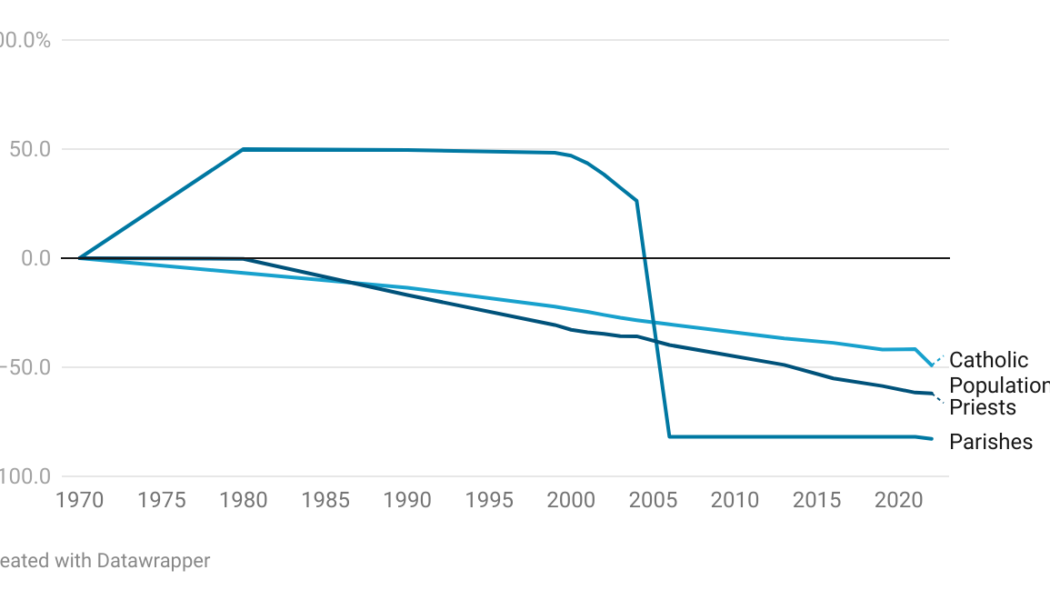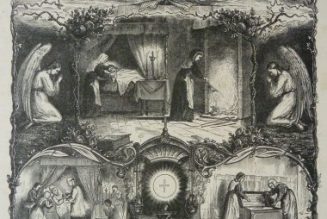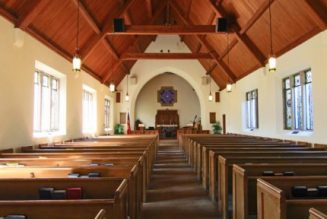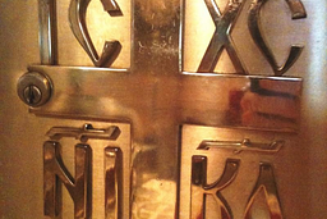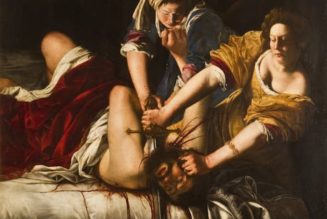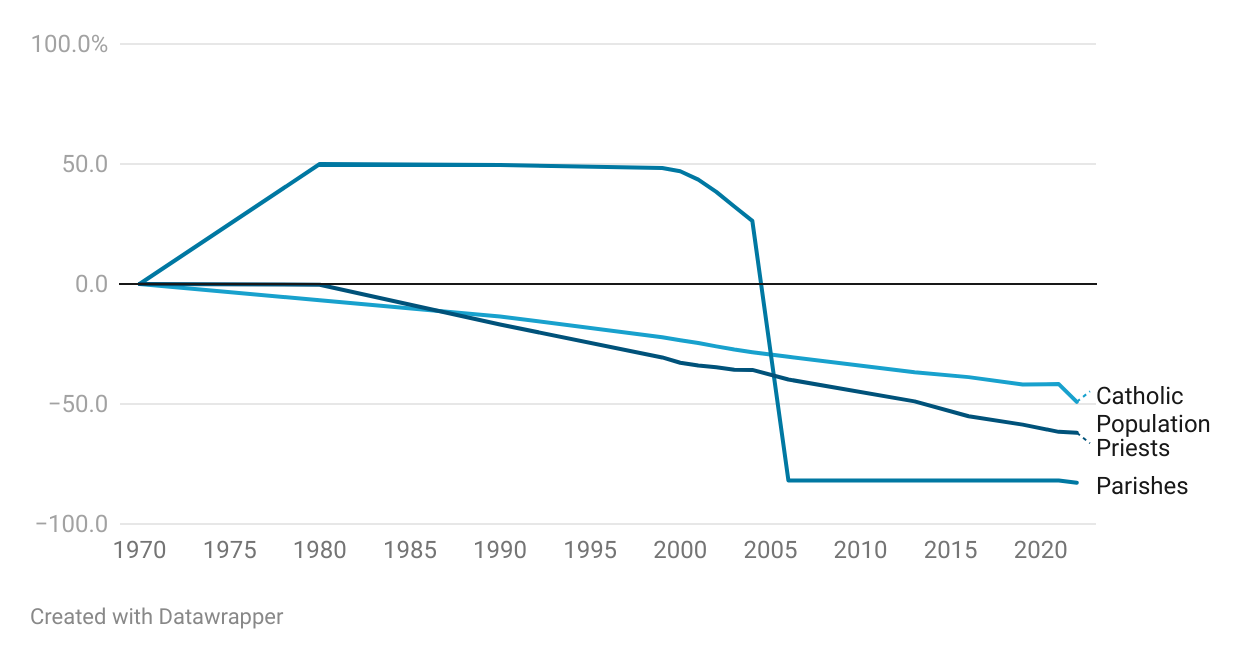
Germany’s Bishop Franz-Josef Overbeck presented a stark picture of his diocese at Saturday’s synod on synodality press conference at the Vatican.
Speaking to journalists in Italian Oct. 21, the Bishop of Essen said: “We almost no longer have seminarians. I’ve been bishop of Essen for 14 years. In these 14 years, I have buried almost 300 priests and ordained 15. And this is our reality.”
Earlier in the press conference, Overbeck had presented the rationale for Germany’s “synodal way” — a highly controversial three-year initiative that brought together the country’s bishops and select lay people to discuss far-reaching changes to Catholic teaching and practice.
Overbeck’s remark about the state of the priesthood in the Diocese of Essen — meant to illustrate the need for new criteria for priestly ordination — lit up social media and left Catholics outside Germany wondering how the diocese’s condition had become so dire.
Here’s a quick look at a diocese that has stepped briefly into the global Catholic spotlight.
A diocese in freefall
The Diocese of Essen is based in the western Germany city of the same name. The word “Essen” means both “to eat” and “food” in German, but the city’s name is likely derived from a similar sounding word with a different meaning.
The diocese, which dates back to only 1957, is known as “the Ruhr diocese” because it covers the heavily industrialized region that is Europe’s third-largest conurbation after London and Paris. To give some idea of the area’s population density, around 140 million people live within a 500 kilometer (310-mile) radius of Essen.
Essen is both one of the newest and smallest of Germany’s 27 dioceses. Its first bishop was the charismatic, socially engaged Cardinal Franz Hengsbach, who led the diocese for three decades, finally stepping down in 1991 at the age of 80.
The cardinal’s towering reputation was dramatically toppled in September when the diocese announced that it was investigating at least three sexual abuse allegations against him. A brightly colored statue of Hengsbach outside the diocesan cathedral was removed.
Overbeck personally acknowledged mistakes in handling the allegations against his predecessor. He apologized to Catholics in the diocese for not doing more when he first heard an allegation against Hengsbach in 2011, wrongly believing that it had been resolved. He had attended the unveiling of the cardinal’s statue that year despite being aware of the claim.
When Overbeck was appointed to the diocese in 2009, he was only 45, making him Germany’s youngest bishop. According to the German magazine Der Spiegel, his residence is the first floor of a former rectory and his official car is the luxury Volkswagen Phaeton.
In statistical terms, the Essen diocese has been in decline since at least 1970. That year, it served 1,335,303 Catholics, or 44.1% of the total population, in 232 parishes with 991 priests.
By 2002, there were only 988,433 Catholics, accounting for 37.2% of the population, in 321 parishes, with 647 priests.
In 2022, the diocese was down to 679,495 Catholics, representing 26.6% of the population, in 40 parishes, with 407 priests.
An average of 29,610 people, or 4.36 % of baptized Catholics, regularly attended Masses last year.
Just over 14,000 people formally left the Church in the Essen diocese in 2022, the highest annual figure on record.
There were 7,928 church funerals, far exceeding the 4,542 baptisms.
One new priest was ordained for the diocese in 2022, while five men were in priestly formation.
A diocesan spokesman told The Pillar Oct. 24 that there are currently three men in formation following the departure of two candidates.
The spokesman said that at the Vatican press conference, “the bishop made it clear that — with a view to previous years — we have almost no seminarians left in formation.”
The Essen diocese appears, in short, to be in statistical freefall.
A synodal way laboratory
Bishop Overbeck believes that Germany’s synodal way represents the best chance for renewal of the Church in the Ruhr diocese.
He has already implemented significant parts of the initiative’s agenda in his diocese, making Essen a kind of laboratory for the synodal way experiment.
For example, Essen was the first diocese in Germany to appoint extraordinary lay ministers of baptism on a stable basis. In March 2022, Overbeck gave a three-year mandate to 18 lay pastoral and parish workers — 17 women and one man — to serve as extraordinary baptismal ministers. He described the step as a necessary response to “a difficult pastoral situation” caused by a shortage of priests — a claim not universally accepted.
Participants in the synodal way’s final plenary assembly in March this year approved a document calling on the German bishops’ conference to develop regulations “for the qualification and commissioning of lay men and women to lead the celebration of baptism” — a measure promptly rejected by the Vatican.
Rome also opposed another provision in the same document, urging bishops to commission “theologically and spiritually qualified” lay people to deliver the homily at Sunday Masses.
In a March interview posted on the Essen diocese’s website, Overbeck said that lay men and women were already preaching at Masses in numerous locations.
“I am very happy about these developments in the past few years, which are also an expression of the fact that many people in our diocese are very concerned about passing on the faith to future generations, but also about proclaiming it in a true-to-life way in our society today,” he said.
Overbeck also noted that same-sex blessings, endorsed in another synodal way document, were already widely available in the diocese.
“Couples who want God’s blessing for their love are supported and accompanied in the Diocese of Essen in their wish and in planning a blessing celebration,” he said.
‘Frustration and bitterness’
The Essen diocese has seen a drastic reduction in the number of its parishes, from 348 in 1980 to 40 today.
The big change occurred in 2005, when Overbeck’s immediate predecessor, Bishop Felix Genn, merged more than 250 communities into 43 parishes, giving up 96 church buildings, reducing staff, and centralizing services.
Genn said that the diocese was forced to take the steps “in view of the declining number of Catholics and active priests in the Diocese of Essen, as well as the drastically reduced church tax revenue” — years before other German dioceses were obliged to acknowledge similar realities.
The cuts were so sharp that even the history page on the diocese’s website acknowledges that it left behind “frustration and bitterness.”
Although the diocese denied a report in May this year that there will be another cut to just 10 parishes, there are further structural changes ahead.
The city of Bottrop, for example, has 37,000 Catholics out of a total population of 117,000, currently served by two parishes. Overbeck has reportedly said that the two parishes should be merged by fall 2024 if possible, but no later than 2025.
In 2010, the diocese was hit hard by the abuse crisis that engulfed the German Church, led to a continuing mass exodus of Catholics, and inspired the creation of the synodal way in 2019.
In 2012, Overbeck sought to stabilize the diocese by launching a “dialogue process.” In what was perhaps a preview of the synodal way — and maybe even the global synodal process — the diocese established six “dialogue forums” in which around 300 people discussed topics such as Church structures, the contents of Catholic beliefs, and the organization of church services.
The dialogues were summed up in what the diocese called its “Vision of the Future,” which sought to capture Essen’s desired future in seven words: Moved, awake, diverse, learning, sent, effective, and close.
Overbeck seems to have seized on the synodal way with the determination of a drowning man grabbing a life raft. That helps to explain why he presented the initiative at the Vatican last Saturday as a way of securing the Church’s future, when many (especially outside Germany) fear it will only hasten its dissolution.
Editor’s note: This article was updated Oct. 24 with comments from a spokesman for the Essen diocese.
Comments 35
Services Marketplace – Listings, Bookings & Reviews
